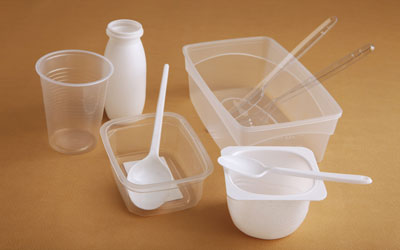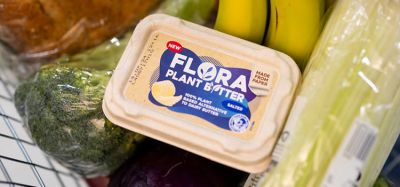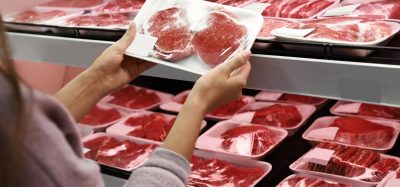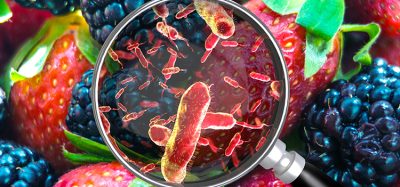Packaging Contaminants: Food contact material regulations in Europe
- Like
- Digg
- Del
- Tumblr
- VKontakte
- Buffer
- Love This
- Odnoklassniki
- Meneame
- Blogger
- Amazon
- Yahoo Mail
- Gmail
- AOL
- Newsvine
- HackerNews
- Evernote
- MySpace
- Mail.ru
- Viadeo
- Line
- Comments
- Yummly
- SMS
- Viber
- Telegram
- Subscribe
- Skype
- Facebook Messenger
- Kakao
- LiveJournal
- Yammer
- Edgar
- Fintel
- Mix
- Instapaper
- Copy Link
Posted: 1 September 2015 | Marinella Vitulli, Laboratory Manager, pH Laboratory, Florence, TÜV SÜD | No comments yet
Food packaging and food contact materials are essential to provide consumers worldwide with safe and nutritious food. Packaging manufacturers must be prepared to deal with a diverse global regulatory landscape, as well as customer procurement requirements based on voluntary standards. This article gives an overview of recent European regulations and TÜV SÜD’s testing strategy, with a focus on plastic materials.


European regulations on food contact materials
The European Legislation on Food Contact Materials is based on the framework Regulation (EC) No 1935:2004. This Regulation establishes the general requirements for food contact materials and the authorisation of new substances. Regulation (EC) No. 1935:20041 includes the following requirements:
- Food contact materials:
- Must be safe.
- Must not transfer their components into food in quantities that could endanger human health, change food composition in an unacceptable way or deteriorate its taste and odour.
- Must be traceable throughout the production chain.
- Articles intended for food contact must be labelled or bear the glass and fork symbol (Figure 1, page 47). This labelling is not obligatory if food contact is obvious by the article’s nature, e.g. knife, fork, wine glass.
- Labelling, advertising and presentation of food contact materials must not mislead consumers.
- Information on the appropriate use of food contact materials or articles must be provided, if necessary
- Are manufactured according to good manufacturing practice
Furthermore, the Good Manufacturing Practice (GMP) is described and regulated in the Commission Regulation (EC) No 2023/20062, which establishes the general principles for improving a GMP quality system applied to food contact materials.
Under Regulation (EC) No 1935/2004, food contact materials must be authorised by the European Food Safety Authority (EFSA) prior to being placed on the market. Food contact materials that have been authorised are listed in a publicly-available online database maintained by the EFSA, available at: https://webgate.ec.europa.eu/sanco_foods/main/?event=display.
Regulation (EC) No 1935/2004 establishes 17 groups of materials and articles which may be covered by specific measures. The specific measures may also cover combinations of different materials or recycled materials: Active and intelligent materials and articles, adhesives, ceramics, cork, rubbers, glass, ion-exchange resins, metals and alloys, paper and board, plastics, printing inks, regenerated cellulose, silicones, textiles, varnishes and coatings, waxes and wood.
Safety and migration of food contact materials
The Regulation includes definitions of active and intelligent packaging. The terms ‘active packaging’,’ intelligent packaging’, and ‘smart packaging’ describe packaging systems for food, which are helpful to improve safety, maintain freshness, extend shelf life, display information on quality and support the convenience character of food packaging.
If the materials release substances into the food that change the food composition or properties, then these substances must comply with food legislation, e.g. food additives. These materials and articles cannot be used to mask spoilage of food and mislead the consumer. In Europe there are specific measures for ceramics, regenerated cellulose, plastics, recycled plastics and active and intelligent materials and articles. Other materials are covered by specific measures at a national level.
Focus on plastic materials
Of course, plastic is the most important packaging material on the packaging market and the one on which the European Commission has focused its attention, risk assessment and legislation. The requirements concerning plastic materials are set forth in the European Regulation (EU) No. 10/20113, which describes the migration limits for plastic materials:
- Overall Migration Limit (OML) – 10mg of substances/dm² of the food contact surface for all substances that can migrate from food contact materials to foods
- Specific Migration Limit (SML) for individual authorised substances fixed on the basis of a toxicological evaluation
- SML is set according to the acceptable daily intake or the tolerable daily intake established by the Scientific Committee on Food
- Residual quantity in material (QM) limits for certain substances.
The limit is set on the assumption that every day throughout an individual’s lifetime, a person weighing 60kg eats 1kg of food packed in plastics containing the substance in the maximum permitted quantity.
Risk assessment and testing approach
Compliance with these limits is verified through a testing scheme described in the Regulation. Consistently with the requirements of Regulation (EC) No. 1935/2004, plastic food packaging and food contact materials are also subject to review and authorisation by the EFSA prior to being placed on the market.
The general rule for the planning of risk assessment of food contact materials is based on Article 3 of the framework Regulation (EC) No. 1935:2004: The item must not transfer components into food in quantities that could endanger human health, change food composition in an unacceptable way or deteriorate its taste and odour. To assess this transfer, tests carried out on items that have not yet come into contact with food must be performed under standardised test conditions including testing time, temperature and test medium (food simulant) representing the worst foreseeable conditions of use of the plastic material or article.
A food simulant is a test medium that imitates food. In its behaviour the food simulant mimics migration from food contact materials, where foods are classified in the categories of foods that have a hydrophilic character, acidic foods (foods which have a pH below 4.5), foods with alcohol content, foods which contain a relevant amount of organic ingredients that render the food more lipophilic, dairy products and dry foods. The legislation described in Regulation (EU) No. 10/2011 provides tables of food categories and specific assignment of food simulants (Table 1).
Testing is performed by putting the material into contact with the simulant. Testing conditions, such as time and temperature, are selected taking into consideration the final use of the item, respecting the worst case principle and consequently selecting the highest possible temperature and the longest period of time, considering the worst reasonably foreseeable final use.
To test overall migration for aqueous simulants, the migration of non-volatile substances from a sample is determined as the mass of non-volatile residue after evaporation of the food simulant following the contact with the simulant. The overall migration in oil is determined as the loss in the mass of specimens after the contact with the simulant vegetable oil. Specific migration testing is also necessary to assess migration for individual authorised substances. It can be performed using all the simulants representing foods intended to be put into contact with the item.
Screening food simulants selection for specific migration testing
In Regulation (EU) No. 10/2011 it is stated that: “As migration testing is complex, costly and time consuming it should be admissible that compliance can be demonstrated also by calculations, including modelling, other analysis, and scientific evidence or reasoning if these render results which are at least as severe as the migration testing. Furthermore, it is clarified that to screen for specific migration, food simulants can be replaced by substitute food simulants if it is based on scientific evidence that the substitute food simulants overestimate migration compared to the regulated food simulants.”
As stated in the results of the workshop on Regulation (EU) No. 10/20114: “the recommendation on screening food simulants selection is based on the rule “similar solves similar”, i.e. the closer the polarity of the migrant and the simulant is, the better the solubility of the migrant will be in the simulant. As a measure of polarity the octanol to water partition coefficient (KO/W) is used because plenty of scientific literature is in place and numerous estimation procedures including software tools exist.” Consequently, for screening purposes the number of tests may be reduced to a single food simulant if it can be demonstrated that this food simulant will give the highest migration result.
Specific migration: Laboratory strategy
In practice this means that only one test, rather than three or more, must be performed. This is the testing approach adopted by the pH TÜV SÜD Laboratory since the publication of the Regulation in 2011. This approach, which is actually very rare in the food contact testing market, allows both safe and scientific risk assessment, significantly reduced test costs and sustainable quality control for customers. The food simulant in which the migrant has the highest solubility, i.e. gives the highest migration result, is in general the worst case. Data about solubility can be found in literature. Of course this approach requires chemical expertise, and a preliminary study.
Furthermore, food simulant acetic acid 3% (food simulant B) is the worst case for metals and inorganic compounds and for organic substances which are soluble in acidic media, e.g. by protonation such as amines. Migration of primary amines (linear and aromatic) can be determined using 3% acetic acid as the worst case food simulant, therefore determination of the migration into another food simulant may be omitted. Polymers containing a primary amine cannot be tested with food simulant D2 due to reaction of the primary amine with aldehydes present in the oil.
Non-intentionally added substances
Food contact materials can release non-intentionally added substances (NIAS) as result of the interactions between different ingredients in the packaging materials, from degradation processes and mainly from the impurities present in the raw materials used for their production. NIAS have long been ignored in the safety evaluation of food contact materials.
Recently, however, NIAS have become a topic of interest as they are specifically mentioned in Regulation (EU) No. 10/2011: “…as far as NIAS are relevant for the risk assessment the main reaction and degradation products of the intended application of a substance should be considered and included in the restrictions of the substance… Any potential health risk in the final material or article arising from reaction and degradation products should be assessed by the manufacturer in accordance with internationally recognised scientific principles on risk assessment.”
NIAS risk assessment: Laboratory strategy
Although guidance on how NIAS should be analysed and assessed, or which approach a manufacturer can follow to demonstrate the safety and therefore compliance of their final articles according to Regulation (EU) 10/2011, is currently lacking, it is clear that the assessment is imperative. As long as this guidance is lacking, assessment of NIAS awaits a harmonised approach.
Taking into consideration scientific data published in 2011 related to the European Matrix Project, TÜV SÜD has developed a screening approach to assess the NIAS related risk. NIAS are unknown compounds that can be detected when using highly sensitive, advanced analytical techniques. The approach is based on sophisticated techniques (GC-MS, LC Q TOF etc.) and on accurate data interpretation, based on experience, specifically developed databases and software.
Conclusion
Consumers are experiencing significant changes in the way in which food is prepared and consumed. With less time available for daily tasks, more and more consumers are finding refrigerated and other prepared foods a convenient alternative to home cooked meals. Furthermore the trend of dining out between one and three times a week is rising. Manufacturers seeking worldwide acceptance for their food packaging products and materials will benefit from a thorough understanding of all of the substances used in their products and materials, and a detailed analysis of the regulations and standards applicable to those substances. This information can lead to the development of a comprehensive regulatory approval strategy that can eliminate duplicate product review and testing activities and result in a more efficient and cost effective product approval process.
References
- Regulation (EC) No. 1935/2004 of the European Parliament and of the Council of 27 October 2004 on materials and articles intended to come in contact with food and repealing Directives 80/590/EEC and 89/109/EEC”, Official Journal of the European Union, 13th November, 2004. Availabe at: http://eur-lex.europa.eu/legal-content/EN/ALL/?uri=CELEX:32004R1935
- Commission Regulation (EC) No 2023/2006 of 22 December 2006 on good manufacturing practice for materials and articles intended to come into contact with food (Text with EEA relevance), Official Journal of the European Union, 29th December 2006. Available at: http://eur-lex.europa.eu/legal-content/EN/TXT/?uri=celex:32006R2023
- Commission Regulation (EU) No 10/2011 of 14 January 2011 on plastic materials and articles intended to come into contact with food (Text with EEA relevance), Official Journal of the European Union, 1st January, 2011. Availabe at: http://eur-lex.europa.eu/legal-content/EN/ALL/?uri=CELEX:32011R0010
- Hoekstra, E (Ed). Training workshop “Safety of food contact materials: Technical Guidelines for Testing Migration under Regulation (EU) No 10/2011”. Publications Office of the European Union (2014). Available at: https://ec.europa.eu/jrc/en/publication/eur-scientific-and-technical-research-reports/training-workshop-safety-food-contact-materials-technical-guidelines-testing-migration-under
About the author
Marinella Vitulli is the Laboratory Manager of pH laboratory, which was acquired by the TÜV SÜD Group in 2013. As a chemist, she has been working as a Laboratory Manager for 10 years. She specialises in food contact materials, works with the Italian Institute of Packaging, and is represented in technical committees and boards. She is also a lecturer, teaching courses for the professional qualification of Food Contact Expert – AIBO Association. Through its comprehensive analysis, certification, auditing and inspection services, TÜV SÜD can assist manufacturers in navigating and complying with food packaging and food contact materials regulations and standards worldwide. Further information is available at: www.tuv-sud.com/foodsafety







